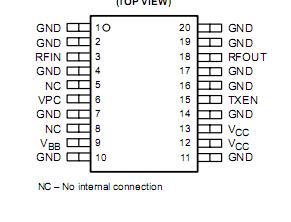TRF8010: Features: · Operates from 3.6-V and 4.8-V Power Supplies for AMPS/NADC and GSM Applications Respectively· Unconditionally Stable· Wide UHF Frequency Range 800 MHz to 1000 MHz· 21 dBm and 23 dBm Typi...
floor Price/Ceiling Price
- Part Number:
- TRF8010
- Supply Ability:
- 5000
Price Break
- Qty
- 1~5000
- Unit Price
- Negotiable
- Processing time
- 15 Days
SeekIC Buyer Protection PLUS - newly updated for 2013!
- Escrow Protection.
- Guaranteed refunds.
- Secure payments.
- Learn more >>
Month Sales
268 Transactions
Payment Methods
All payment methods are secure and covered by SeekIC Buyer Protection PLUS.

 TRF8010 Data Sheet
TRF8010 Data Sheet







